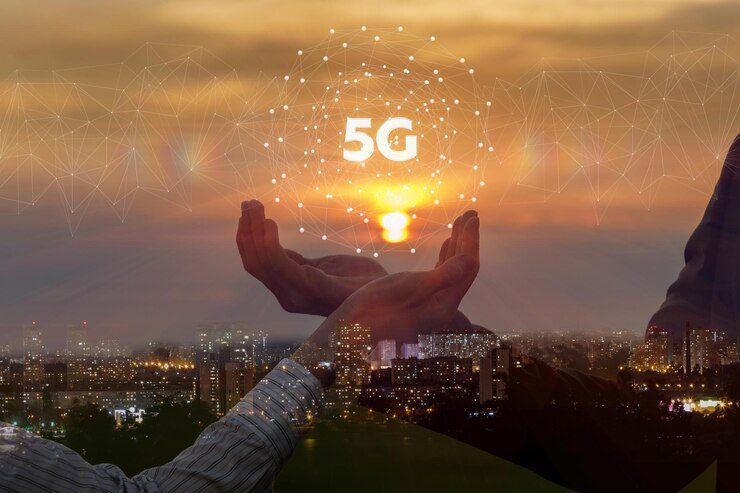As we stand on the cusp of a technological revolution, the advent of 5G technology is poised to reshape our world in ways we could scarcely imagine a decade ago. This fifth generation of wireless connectivity promises not just a leap, but a quantum leap in how we interact with the digital universe. Like a river that has swollen after a heavy rain, 5G technology is set to overflow its banks, bringing with it a torrent of innovations and opportunities. In this blog, we will explore the transformative power of 5G and the possibilities that lie beyond it.
The Dawn of 5G Technology
5G technology, the latest iteration of cellular mobile technology, has been meticulously crafted to enhance speed, reduce latency, and improve flexibility of wireless services. The statistics are staggering: 5G is expected to be up to 100 times faster than 4G LTE, with peak data rates hitting 20 Gbps. This isn’t just an incremental upgrade; it’s a seismic shift, akin to replacing a bicycle with a supersonic jet.
At the heart of 5G technology are three key advancements:
Enhanced Mobile Broadband (eMBB): This will provide significantly faster data rates and greater capacity, making activities like streaming 4K videos and virtual reality gaming seamless and immersive.
Ultra-Reliable Low-Latency Communications (URLLC): Critical for applications that require near-instantaneous response times, such as autonomous driving and remote surgery, URLLC reduces latency to mere milliseconds.
Massive Machine Type Communications (mMTC): Designed to connect a vast number of devices, mMTC is the backbone of the Internet of Things (IoT), enabling smart cities, smart homes, and industrial automation.
Transforming Industries and Everyday Life
5G technology is not just about faster internet on our phones; it’s the key to unlocking the potential of various industries and revolutionizing everyday life. Let’s dive into some sectors poised for transformation:
Healthcare
Imagine a world where surgeons perform intricate operations from miles away with robotic precision, thanks to real-time data transmission facilitated by 5G technology. Telemedicine, too, stands to benefit immensely, providing high-quality healthcare to remote areas with limited access to medical facilities. According to a report by MarketsandMarkets, the telehealth market is projected to reach $55.6 billion by 2025, driven in part by the widespread adoption of 5G.
Automotive
The automotive industry is shifting gears towards a future dominated by autonomous vehicles. 5G’s ultra-reliable low-latency communications ensure that self-driving cars can make split-second decisions, enhancing safety and efficiency. A study by Intel predicts that autonomous vehicles could generate $7 trillion in economic activity by 2050, with 5G technology serving as the linchpin for this transformation.
Smart Cities
From smart traffic lights that reduce congestion to intelligent waste management systems that optimize collection routes, 5G technology is the cornerstone of smart cities. These cities will be more efficient, sustainable, and responsive to the needs of their residents. The global smart city market is expected to grow from $410.8 billion in 2020 to $820.7 billion by 2025, according to Grand View Research.
The Role of IoT and AI in the 5G Era
The synergy between 5G technology, the Internet of Things (IoT), and Artificial Intelligence (AI) is set to create a tapestry of interconnected devices and intelligent systems. Imagine a world where your refrigerator orders groceries, your thermostat adapts to your preferences, and your car schedules its own maintenance—all autonomously, without any human input.
IoT: With 5G’s massive machine type communications, billions of devices can be connected simultaneously, each communicating with minimal latency. This network of devices, ranging from household gadgets to industrial machinery, will generate a tsunami of data.
AI: Enter AI, which will sift through this ocean of information, identifying patterns and making decisions in real time. For instance, in smart factories, AI-driven predictive maintenance will ensure machines are serviced before they break down, reducing downtime and increasing productivity.
Conclusion
5G technology is more than just the next step in wireless connectivity; it’s a giant leap towards a more connected, efficient, and intelligent world. From transforming industries to enhancing our daily lives, the potential applications are limitless. As we embrace this new era, we must also navigate the challenges and ethical considerations that come with it.
Looking beyond, the promise of 6G technology tantalizes our imagination with possibilities that today seem like science fiction. As we move forward, the symphony of human innovation and technological advancement will continue to play, creating a future where the boundaries of what is possible are constantly being redefined.
So, as we stand at the dawn of this new era, let us embrace the winds of change brought by 5G technology, for they carry us towards a horizon of endless possibilities.







